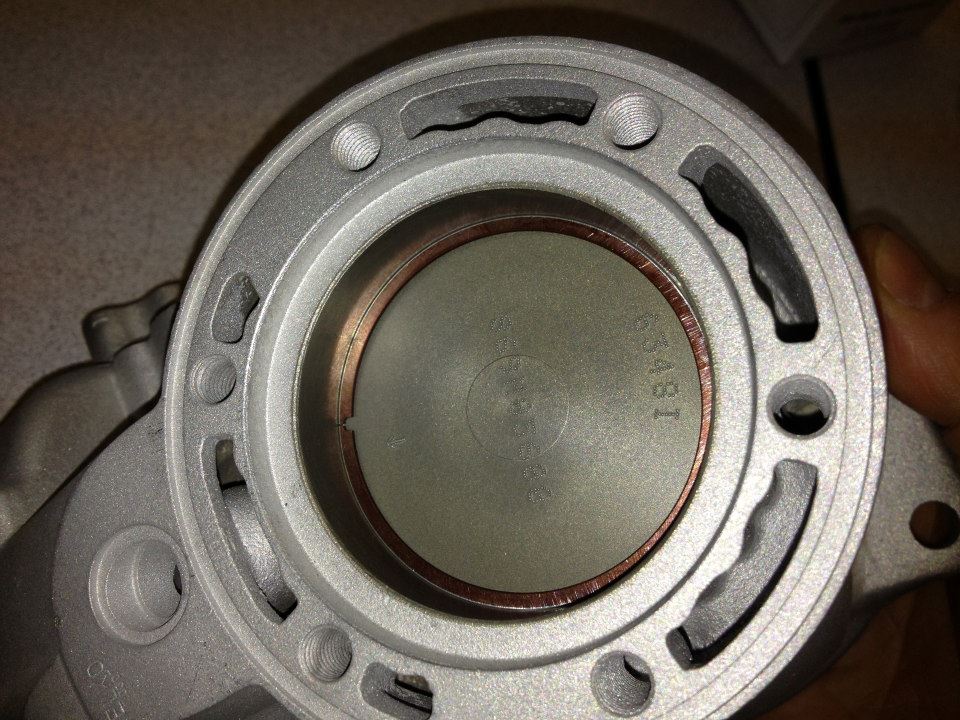2-Stroke Tech: Are you checking your ring end gap?
Why is end gap important on my 2-stroke? Proper end gap assures that the ring can operate correctly, and has enough room to expand from heat, and not bind on the piston locating pin or in the cylinder bore – this is the result of too tight an end gap. On a 2-stroke, too loose is less of a problem, to a point. Excessive end gap is an indication of a worn ring and cylinder bore, at which point it is a good time to look at replacing any worn parts in the system to bring everything back into proper tolerance. In the first picture, you will see a cylinder and piston kit, along with the minimum tools that you should have to measure ring end gap. The calipers are optional, but at very least you will need a good set of feeler gauges and a calculator.
Basic tools required
Here is a quick run-down: Once the cylinder has been prepared, install the piston ring into the cylinder bore, and locate this about .500” down from the top of the cylinder. You can use the calipers to set this distance, or you can “eye ball” the distance.
What is important here is that you locate the ring down far enough into the cylinder that it sits in an area where it will operate (more on that shortly). Once into the bore at the approximate distance down, you can next use the piston to square-up the piston ring.
You do not want to measure the ring end gap with ring at the very top of the cylinder bore. This area is not worn as much as the working area of the cylinder bore, and will give a false (small) reading of ring end gap. Once the piston ring is located and squared up, measure the end gap using the feeler gage. A rule of thumb for ring end gap measurement is to use the bore size in inches x .005”. In the example here, a KTM 150, the bore is 56mm (56 divided by 25.4 = 2.2047”). If you multiply 2.2047” x .005”, the result is .011”. This would be the minimum installed ring end gap. A typical high measurement for the piston ring end gap would be the bore in inches x .007” (2.2047 x .007” = .015”). These calculations are a general guideline, and your OEM service manual will also provide further detail.
It is a good practice to watch the engine compression closely over time, and the piston ring is an important factor in this equation. As the compression (and performance) begin to fall off, it is time to go in and measure the piston, piston ring, and cylinder, and determine of the engine is due for new parts. It is also a great idea to install an hour gauge on your bike to monitor the intervals. Wiseco offers a very nice hour gage and mount for these purposes, just order part number W8063 (hour meter), W5062 (mounting bracket), or our new hour / tach meter W8061.
Wiseco Hour Meter Part #W8063
Proper set up of your top end during assembly is critical to a long and happy riding season. Now get out there and roost!
Photos and Content courtesy of Wiseco






